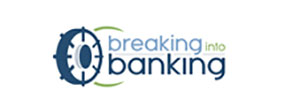
Breaking into Banking
The DBA is pleased to offer two new online videos in Keusal Learning's "Breaking into Banking" series. Breaking into Banking 101: Fundamentals of Commercial Banking; and, Breaking into Banking 201: Analyzing Repayment Sources. Breaking into Banking 101 contains 10 learning modules, over 5 hours in total content. Breaking into Banking 201's nine modules covers topics including how to analyze income statements, balance sheets, collateral, and risk rating. Each module includes a video lesson and a multiple-choice self-check. Many of the lessons include exercises for learners to work through that are related to a sample company outlined in the course’s Reference Guide (pdf). This course is appropriate for credit analysts, lenders, portfolio managers, and others who need skills in financial statement analysis and writing credit documents.
Andy Keusal, Founder and President, Keusal Learning
Registration
Breaking into Banking 101:
Fundamentals of Commercial Banking
Course Description: Commercial banking can be intimidating because of its complexity and the risk-oriented nature of the work. This course is a clear and thorough introduction to the key concepts, terminology, and processes involved in credit and lending. It doesn’t assume much prior knowledge of the topic, so it’s ideal for those in their first year in the industry. Learners will walk away with a clear understanding of their job and how their specific role fits into the bank’s overall profitability goals.
Target audience: New credit analysts, lenders, and underwriters, as well as bankers who don’t do credit analysis but need a working knowledge of the process. This may include statement spreaders, loan processors and closers, treasury management associates, administrative support for credit or lending officers, branch managers, and interns.
Duration: In-person workshop: Typically 1 day; includes 6 hours of facilitation plus breaks Online videos: Ten 30-minute modules, total of five hours of instruction plus self-checks
| 1. The Business of Banking | Why customer relationships matter Identifying and managing risk Net interest income vs. fee income |
| 2. Why Businesses Borrow Money | Working capital financing Real estate and capital expenditures Start-ups, buyouts, bridge loans, and losses |
| 3. The Art of Underwriting - Part I | Industry considerations Life cycle stage of your borrower Analyzing quality of management |
| 4. The Art of Underwriting - Part II | Four levels of quantitative analysis Balance sheet: liquidity and leverage Income statement: margins and coverage |
| 5. Loan Structuring - Part I | Types of loan facilities How loan pricing really works Tenor and amortization |
| 6. Loan Structuring - Part II | Analyzing your collateral What loan covenants do for you The value of guarantees |
| 7. The Credit Approval Process | Courtship and the “life of a loan” Selling the deal twice – bank and customer Loan documentation |
| 8. Loan and Portfolio Monitoring |
Understanding “Expected loss” Loan grading – regulatory definitions Asset performance and loan loss provisions |
| 9. The Complex Lending Machine | Internal relationships Introduction to twelve key banking groups Critical partnership: Credit and Lending |
| 10. Test Drive Your Job | A day in the life of a credit analyst Prerequisite traits for success Career advice and how to love your job |
Breaking into Banking 201: Analyzing Repayment Sources
Course Description: This 9-module online course is a “sequel” to the 101 course and is best taken after completion of that course, though it is not a prerequisite. The 201 course dives deeper into topics covered in modules 4, 6, and 8 of the 101 course: analyzing a borrower’s balance sheet, income statement, collateral, and risk ratings.
Target audience: This course is most appropriate for credit analysts, lenders, portfolio managers, and others who need skills in financial statement analysis and writing credit documents.
Duration: In-person workshop: Typically 4 hours of facilitation plus breaks Online videos: Nine 20-minute modules, total of three hours of instruction, plus exercises and self-checks
| 1. Introduction and Overview | Outline of course objectives and topics Understanding primary and secondary repayment sources Why banks need accurate loan data to estimate credit losses |
| 2. Balance Sheet Analysis, Part 1: Analyzing Liquidity | Better definitions of assets, liabilities, and equity Measuring liquidity: beyond formulas and ratios Quality of current assets |
| 3. Balance Sheet Analysis, Part 1: Analyzing Leverage | The difference between debt and equity How to measure leverage Highly leveraged lending |
| 4. Income Statement Analysis, Part 1: Revenues and Profit Margins | Analyzing revenues: growth and drivers Keys to analyzing gross margin and operating margin Why Return on Assets (ROA) matters |
| 5. Income Statement Analysis, Part 2: Coverage Ratios | Explanation of fixed charges EBITDA as a proxy for cash flow Measuring debt service coverage and fixed charge coverage |
| 6. Collateral Analysis, Part 1: Non-current Assets | Why bankers need a back-up plan Commercial real estate as collateral How to evaluate fixed assets |
| 7. Collateral Analysis, Part 2: Trading Assets | Understanding self-liquidating collateral How to assess the value of inventory Analyzing a borrower’s Accounts Receivable |
| 8. Collateral Analysis, Part 3: Solving the Problems | Understanding Accounts Receivable Aging reports Borrowing base formulas and certificates Unsecured and under-secured loans |
| 9. Risk Ratings, Expected Loss, and Provision for Credit Losses | Assessing an obligor’s likelihood of repayment Dual risk ratings and expected loss Provision for Credit Losses and why it matters |

Andy Keusal - Founder and President, Keusal Learning : Andy Keusal is passionate about using his teaching gift to help others reach their God-given potential. After earning his B.A. in Psychology from the University of Notre Dame, he spent eighteen years in commercial banking, during which he interviewed, hired, and trained hundreds of new bankers. He also helped build and run one of the nation’s premier credit training programs at a large Midwest regional bank. He left his corporate career in 2015 to found Keusal Learning, where he now helps people master the basics of banking. Many of his trainees have moved on to prosperous careers in banking, private equity, and even business ownership.
As a husband and father of ten children, Andy devotes much of his time and energy to helping his wife Andrea educate their nine children still living at home. Whether at home or in the workplace, Andy has a knack for making complex things simple, using humor and a comfortable presentation style to communicate with his audience. He is the author of the popular book, “Breaking into Banking: Cracking the Code on Launching a Successful Career in Commercial Banking,” and the creator and facilitator of the video course by the same name.